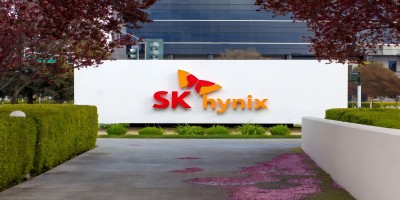On September 25, Vishay Intertechnology Inc. (Vishay), a U.S. manufacturer of discrete semiconductors and passive electronic components, announced a restructuring plan designed to optimize its manufacturing layout and streamline business decisions. Under the plan, Vishay will cut about 800 employees.
According to the official notice, the following two points were revealed:
1. Vishay has decided to close three production facilities. Diodes Packaging plant in Shanghai, China, is expected to close by the end of 2026, with related production transfers to begin gradually in the fourth quarter of 2025;
Resistor plants in Fichtelberg, Germany, and Milwaukee, Wisconsin, USA, will also close in 2026.
The closures will result in the elimination of approximately 365 direct workforce jobs, or about 2 percent of Vishay's manufacturing workforce.
2. Vishay will cut 170 sales and General Management (SG&A) employees between now and the fourth quarter of 2025, representing approximately 6% of its total workforce in this category. Vishay will also reduce 260 manufacturing and production operations employees. However, the company did not specify where the cuts would be made.
Vishay expects the company to face a pre-tax cash charge of approximately $38 million to $42 million, primarily related to severance costs and other expenses, most of which will be incurred in the third quarter of 2024.
Once the full restructuring plan is fully implemented by the end of 2026, Vishay expects to realize annual cost savings of at least $23 million, of which approximately $12 million would have been in selling, general and administrative expenses. The company expects to achieve immediate annual cost savings of approximately $9 million beginning immediately and further annual cost savings of approximately $12 million beginning in the first quarter of 2025.
It is worth mentioning that in November 2023, Wentai Technology announced that its subsidiary Anshi Semiconductor reached an agreement with Vishay. NEPTUNE 6 LIMITED, the parent company of its previously acquired UK Newport Wafer Fab (NWF), will be sold to Vishay for $177 million.
As early as July 2021, ANSy Semiconductor completed the acquisition of 100% equity in NWF parent company NEPTUNE 6. At the time, the NEPTUNE 6 was on the verge of bankruptcy.
The data shows that NEPTUNE 6 had total assets of £44,70,600 and net assets of -£5,177,300 at the end of the 2020 financial year, and was already insolvent at the time of acquisition.
Following the acquisition, ANSy laid out a long-term development plan for NWF, increasing investments to upgrade equipment and expand personnel. After a year of operation, NWF was successfully rescued from a shortage of funds and was on the verge of bankruptcy.
However, in May 2022, the relevant departments of the British government conducted a retrospective review of NWF's acquisition in accordance with the newly introduced National Security and Investment Act, and in November of the same year, on the grounds that it may harm national security, forced ANSI Semiconductor to divest NWF. Eventually, NWF was sold to Vishay in the United States.
In March, Vishay announced that it had completed the acquisition of NWF, based in Newport, South Wales, United Kingdom, for approximately $177 million in net cash. The deal follows approval from the UK government. Since then, however, Vishay's performance has declined.
In the second quarter of this year, Vishay's revenue fell 16.9% year-on-year to $741.24 million, down $12.68 million from the same period last year. The backlog at the end of the quarter was 4.6 months. For the third quarter, Vishay expects revenue to range between $745 million and $20 million, below the consensus of $777.34 million. Gross margin for the third quarter is expected to be in the range of 21.0% by 50 basis points, including a negative impact of approximately 175 to 200 basis points from NWF.



